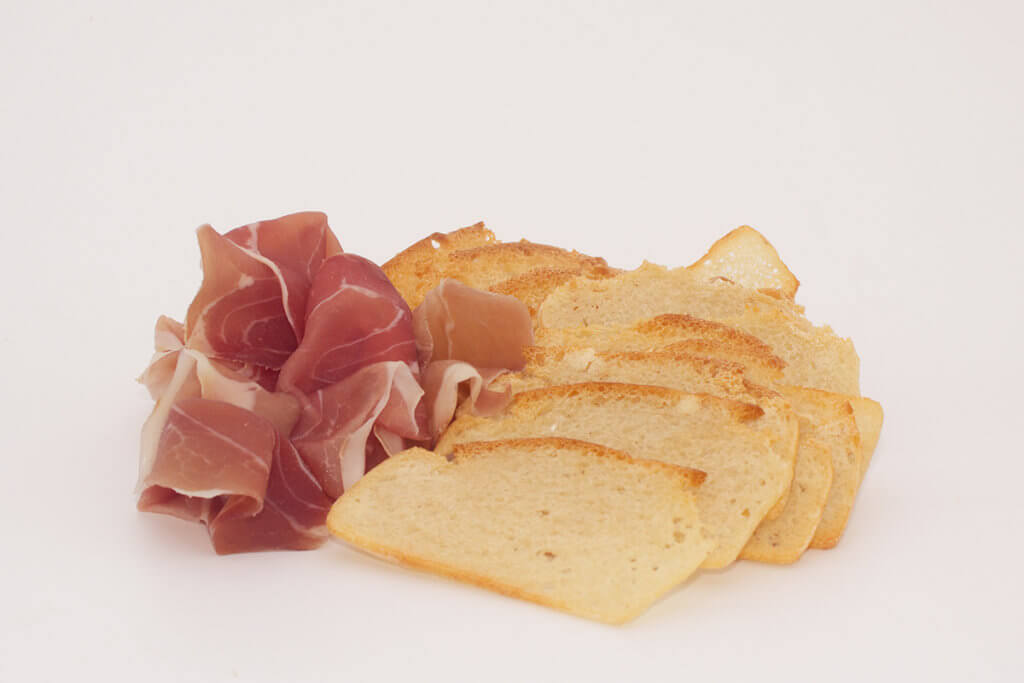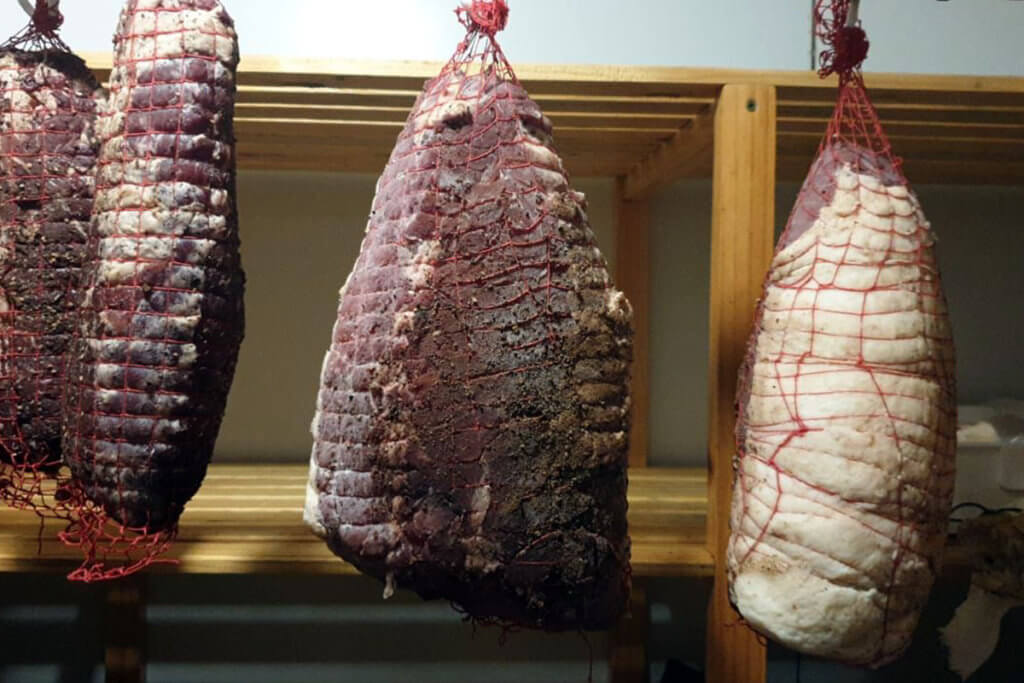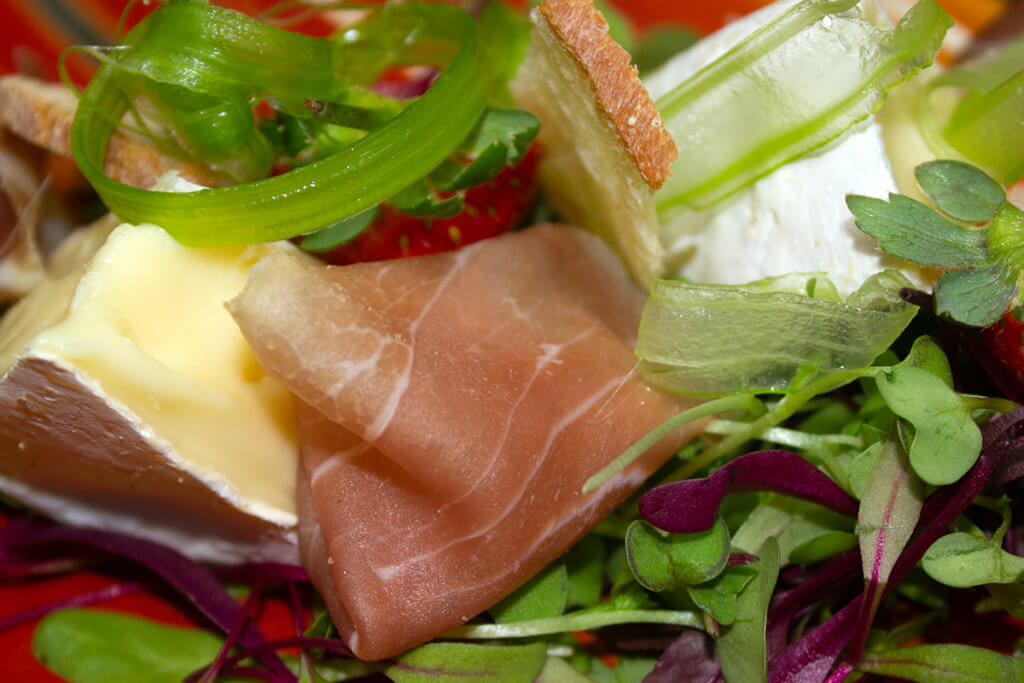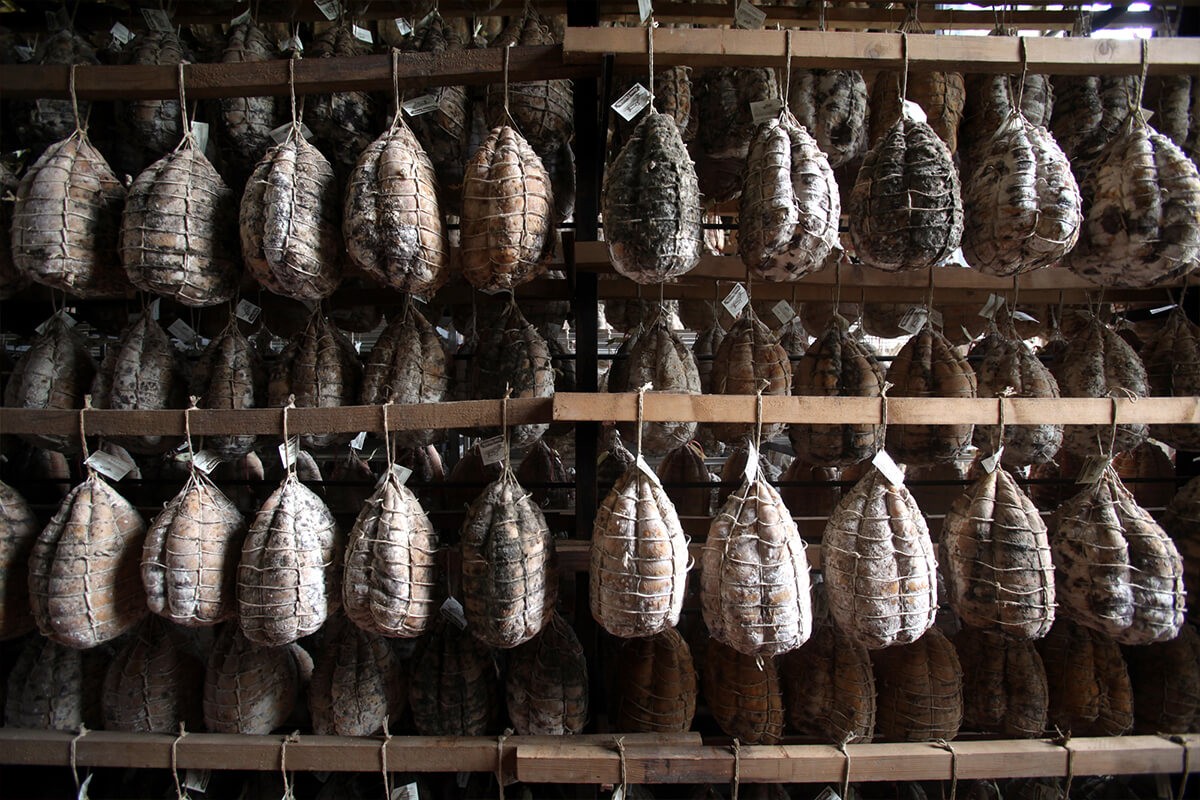What’s in a name?
The name culatello literally means “little ass,” because the cut used to make it is only a small section from the pig’s rear leg with skin and bone removed. The final product resembles thinly sliced lardo and looks like a robust cured meat, but collapses on the tongue and melts in the mouth. But how does it differ from prosciutto and coppa?
Culatello is made from the rump and is delicately moreish, whereas Coppa comes from the neck muscle and boasts a more intense flavour and distinctive fat marbling. Prosciutto Crudo is the more famous bone-in relative famed for its sweet/salty balance.
Why is culatello such a prized delicacy in Italy?
The curing process for culatello hasn’t changed since the Middle Ages: no high-tech tools or machines are involved and it’s and only in season from about October through February in the cool winter climes. According to Naomi Tomki via saveur.com – unlike prosciutto, producers of culatello don’t employ any climate control methods beyond the opening and shutting of a few high windows in a cellar, where row after row of culatelli hang, gathering the natural moulds that grant the ham its unique flavour.
While prosciutto is a mainstream staple on high-end menus around the globe, culatello, its undersized cousin, occupies basements in Parma in the Northern region of Emilia-Romagna, where experts patiently tend to it as it hangs for anywhere between one year and three. Locals attribute the special and unique taste of Culatello di Zibello to the lowland fog of the Po River Valley, attaching a hyper-localness to its rarity and charm. It’s a flavour innate to only eight specific villages that you just can’t find anywhere else on the planet, and that’s a massive drawcard for this iconic meat.
What makes our culatello so damn good?
Karoo (Gay’s Guernsey Dairy) pigs are treated to excess whey proteins from the cheesemaking process to produce this delectably delicate, subtly sweet cured meat that adds a touch of flair and decadence to a host’s repertoire. No chemicals or growth hormones are used in rearing the pigs, who live the dream in a large sunny enclosure, digging in mud and snuffling for roots like pigs should.

Sol’s culatello hails proudly from the little Karoo town of Prince Albert and is made from local whey-fed pork which has been dry-cured, salted and hung with the care and attention befitting the provenance of the meat and its greatest and proudest traditions. Of course, they cannot replicate the Po River’s fog, but their award-winning pigs are of the highest calibre. Once our culatello is cured and dried, transport is a breeze.

Culatello di Zibello – A culinary artefact
Culatello di Zibello in its original form is a relic that has stood the test of time since the ACP’s cellar (above which their Michelin-starred restaurant now stands) first started curing meat in 1320.
At the majestic Antica Corte Pallavicina in Parma, Culatello is served up on a podium of three types for the diner to compare. One option offers an 18-month-old and a 27-month-old traditional version, and there’s also a 37-month-aged black pig, a nod to the provenance of the meat and longevity of the tradition which has brought it to be.
“The little ass”, as Culatello di Zibello is alternatively and affectionately known, is certainly no donkey, but rather a thoroughbred providing a timely reminder that quality often trumps quantity.
Back in South Africa and the town of Prince Albert in the Great Karoo to be precise, Real Food Company is doing its utmost to pay homage to an age-old tradition with its burgeoning line of classy charcuterie products. The star of the show, naturally, is their delicate culatello.

🚨 PSA: If you’ve not yet entered our launch competition/are looking for ways to increase your chances of winning, enter the word PROVENANCE when prompted for a secret code on our Win With Sol’s competition page.


2 thoughts on “Culatello di Zibello – Italy’s unsung hero”